
Source: Stem cell theory
Take a piece of skin or a drop of blood, extract cells, cell "reprogramming", transform into pluripotent stem cells, and then further culture and differentiation, it will become a variety of body cells, such as heart muscle cells, retinal cells, nerve cells, and eventually hope to grow human organs.
This is not a fantasy, but a real scientific advance. iPS cells, or induced pluripotent stem cells, have attracted much attention in recent years and become a new field that many researchers are scrambling to explore.
01 What is an iPS cell
iPS cells are those that reprogram terminally differentiated somatic cells into pluripotent stem cells by introducing specific transcription factors.
In 2006, Shinya Yamanaka, a professor at Kyoto University in Japan, first reported the research of induced pluripotent stem cells in the world-famous academic journal Cell. They cloned four transcription factor genes, Oct3/4,Sox2, c-Myc and Klf4, into the viral vector and then introduced them into mouse fibroblasts, and found that they could induce their transformation. The resulting iPS cells are similar to embryonic stem cells in morphology, gene and protein expression, epigenetic modification state, cell multiplication ability, embryoid and malformation ability, differentiation ability and so on. Professor Shinya Yamanaka won the 2012 Nobel Prize in Physiology or Medicine.

The 2012 Nobel Prize in Medicine
"They discovered how to turn back the clock on mature cells to the primordial state of embryonic development." And these original cells can develop into any kind of cell tissue in the body. This startling discovery turned the traditional way of thinking about cell differentiation and development upside down, and textbooks have been rewritten ever since. By reprogramming human cells, scientists have created new possibilities for diagnosing and curing diseases." -- The 2012 Nobel Prize in Physiology or Medicine
The full name of iPS cells is induced pluripotent stem cells (iPS cells), which is derived from the first letter of various English words. As for why he deliberately used i instead of I, Professor Shinya Yamanaka explained that he hoped that the technology would spread like the iPod that was popular in the past.
If you think of the organ as a big tree, the iPS cells are like a seed, after 'watering' and 'fertilizing', they differentiate into the different cell types of the organ, just like the leaves, trunk and branches of the tree.

02 Advantages of iPS cells
Multidirectional differentiation: iPS cells have similar differentiation potential to embryonic stem cells and can theoretically differentiate into any adult cell and organ type. Through differentiation, they can produce more than 200 types of cells, including blood cells, bone cells, and nerve cells.
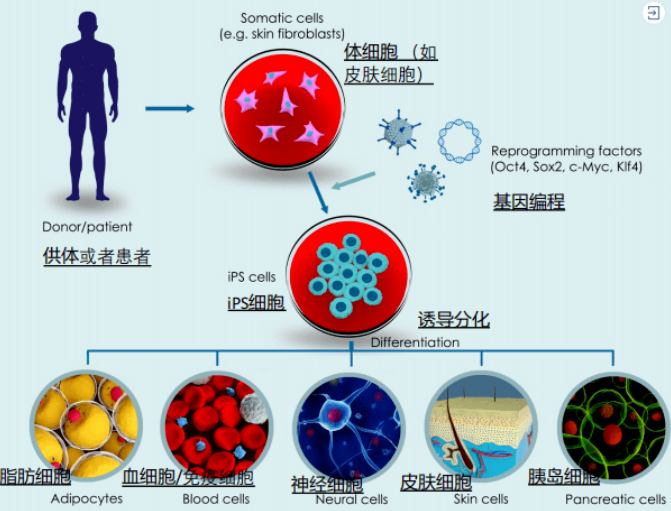
Repair damage: Theoretically able to repair any damage and replace normal tissue that grows again, iPS cell technology has unlocked new skills for humans to recreate body tissues and even organs.
Stable source: The use of iPS cell technology to solve the problem of cell culture sources, regardless of age and disease restrictions, can use iPS technology to cultivate their own cells.
Easy collection: The epidermis and peripheral blood of iPS cells are usually selected for induction reprogramming, which is very convenient to collect.
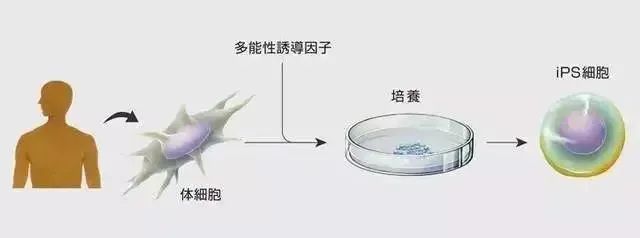
No immune rejection: Proprietary stem cells can be prepared with their own somatic cells, so there is no immune rejection problem.
No ethical issues: Avoid the use of embryonic stem cells or egg cells, no ethical issues.
Great potential: iPS cells have great potential value in alternative therapy and pathogenesis research, new drug screening, and the treatment of neurological diseases, cardiovascular diseases and other clinical diseases.
03 Application of iPS cell technology
01 Using iPS cells to repair brain damage
On April 21, 2021, a team of researchers from the University of California, Los Angeles and the University of Chicago published a study in the journal Science Translational Medicine.
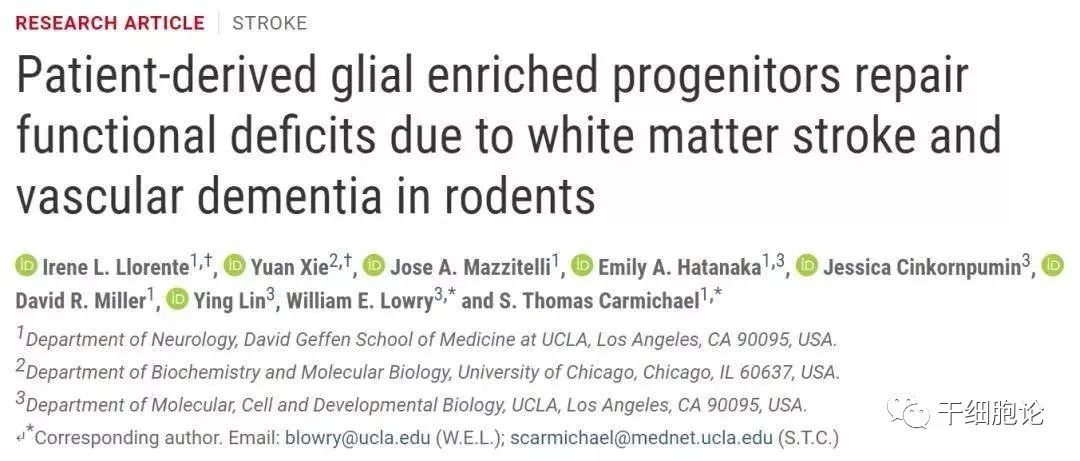
The research team used glial cells derived from artificially induced pluripotent stem cells (IPscs) to inject into the brains of mouse models with human stroke and dementia symptoms, successfully repairing brain damage and improving memory function. The study shows that this IPs-based stem cell therapy can activate the brain's self-repair, stop the progressive development of white matter strokes in the brain and prevent the emergence of dementia.
02 iPS cells achieve mass production of platelets
In 2017, CCTV reported on a Japanese team to achieve mass production of platelets with iPS cells, and blood transfusion without blood may become possible!
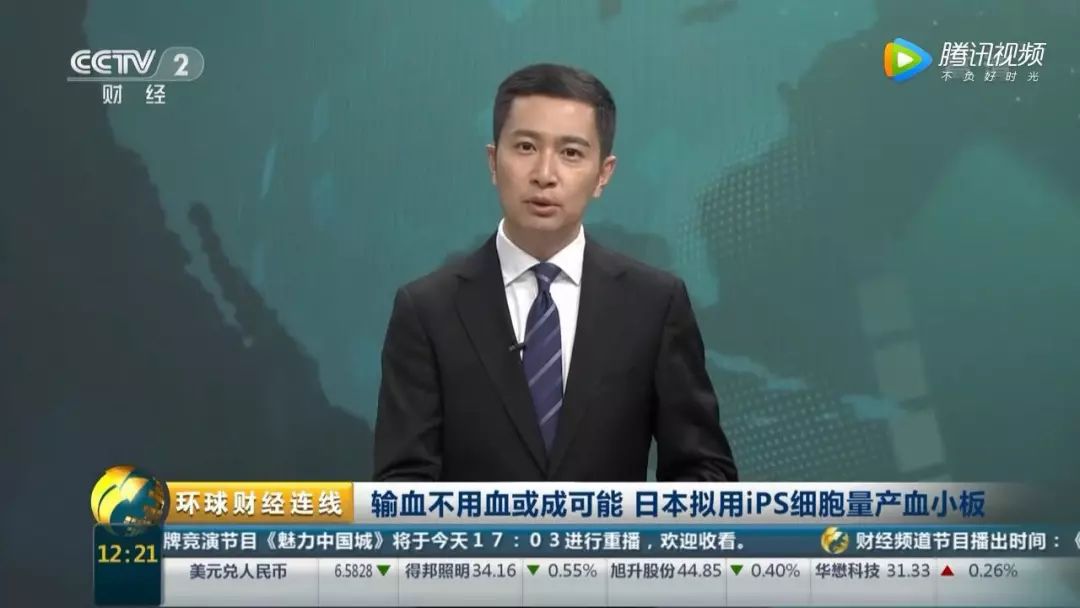
The research was carried out by 16 Japanese pharmaceutical companies, including the iPS Cell Research Institute of Kyoto University and Otsuka Pharmaceutical, which carried out the manufacturing, separation and preservation process respectively. Based on the technology platform of mass production of platelets with iPS cells successfully built by the iPS Cell Research Institute of Kyoto University, it can meet the large demand of more than 100 billion platelets required for a single transfusion in practical clinical applications. The research results were published in the international journal Cell on July 13, 2018.
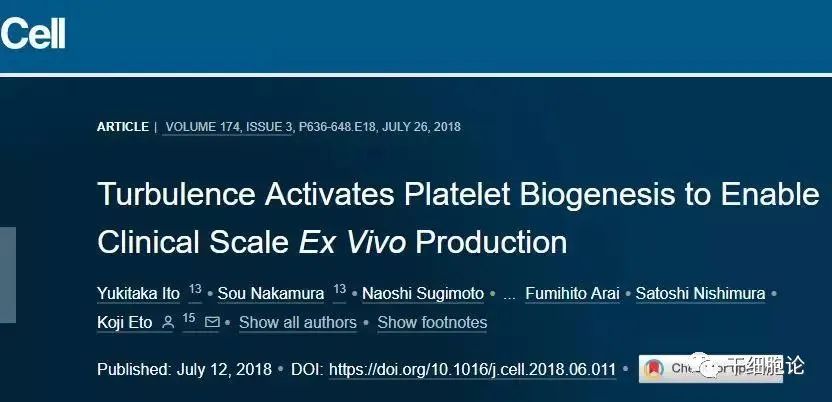
03 World's first iPS cell treatment for heart disease
In 2020, the top international academic journal Nature reported on a clinical treatment study by Wang Dongjin's team at Nanjing Gulou Hospital, in which two Chinese men received experimental heart disease treatment based on "reprogrammed" stem cells and successfully recovered a year later.
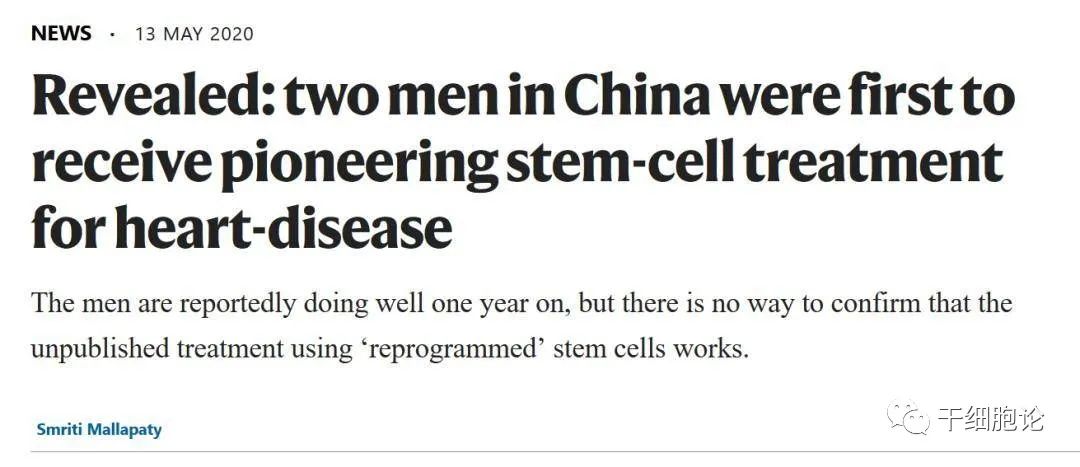
This is the world's first known clinical application of iPS technology for the treatment of damaged hearts.
04 iPS cells generate 'artificial blood vessels' in vitro
In 2019, for the first time in the world, stem cells were successfully grown into complete "vascular organoids" in a laboratory dish, which can realize the structure and function of real human blood vessels. The research is a collaboration between Columbia University and the Institute for Molecular Biotechnology (IMBA) of the Austrian Academy of Sciences and is published in Nature.
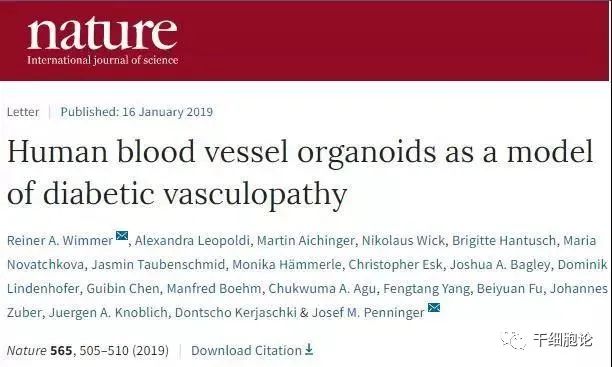
Based on the principle that blood vessels running through the body are derived from stem cell differentiation, the researchers induced pluripotent stem cell (iPSC) technology to induce somatic cells into vascular epithelial cells.
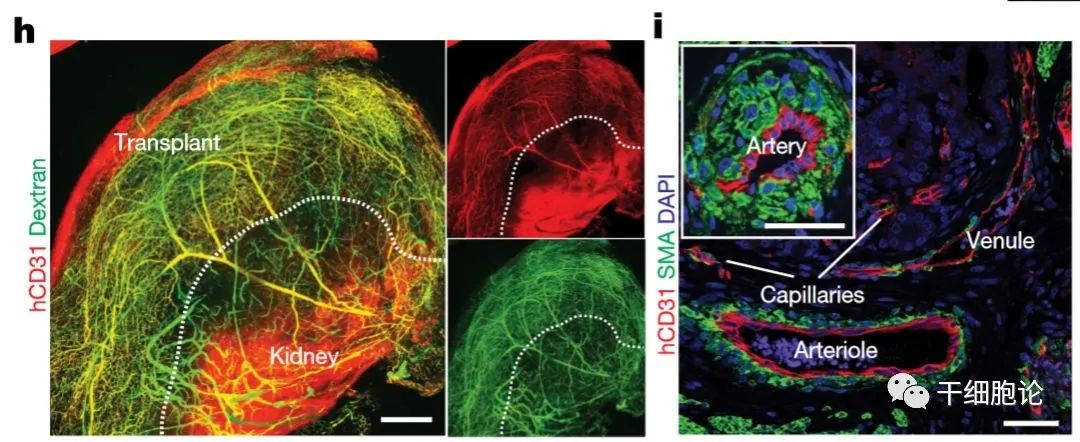
Human vascular organs were transplanted into mouse kidney, and arteries and capillaries were formed
Josef Penninger, one of the researchers, said: "Every organ in the human body is related to the circulatory system. "This breakthrough is expected to help researchers find causes and treatments for a wide range of vascular diseases, such as Alzheimer's disease, cardiovascular disease, wound-healing problems, stroke, cancer, and of course diabetes."
05 iPS cells generate hair follicle cells in vitro
In June 2019, Alexey Terskikh, a scientist at the Sanford Burnham Prebys Institute for Medical Research in the United States, announced at the annual meeting of the International Society for Stem Cell Research (ISSCR) that his team had developed a way to regrow hair using iPS cells, The iPS technology induced dermal papillary mesenchymal cells, which are located inside the hair follicle, to successfully grow human hair on the skin of mice using 3D biodegradable scaffolds to control the direction of hair growth.
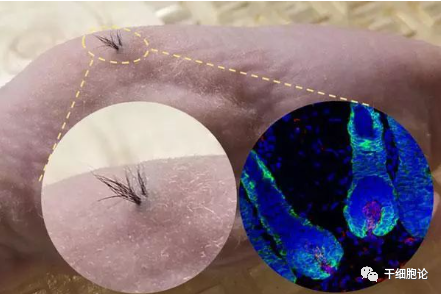
iPS induced hair follicle cells grow hair on the skin of mice
This technique is unlike any other hair follicle regeneration method in that iPS cells can provide an unlimited supply of cells and can be obtained from a simple blood draw. Not only does it overcome the key technical challenges of hair regeneration, it is highly controllable and grows natural hair through the skin!
04 Write at the end
In the life sciences, iPS cells can be used to treat various diseases, such as heart disease, liver disease, neurological diseases, etc. By converting a patient's own adult cells into iPS cells and further differentiating them into specific types of cells that require treatment, issues such as transplant rejection and ethical controversy can be avoided. At the same time, in terms of drug screening, iPS cells can also simulate the reaction of human organs and tissues to drugs, so as to effectively reduce the risk and cost of new drug development.
In addition, iPS cells have a wide range of applications. For example, in the field of reproductive medicine, the use of iPS technology can achieve artificial sperm and egg preparation; In the field of animal protection, endangered animals can be transformed into more environmentally suitable varieties through gene editing technology.
The emergence of iPS cells has not only brought a huge breakthrough in the medical field, but also brought a broader development space for the entire human society. According to a series of breakthroughs made by iPS cells in a short period of time, I believe that under reasonable norms and scientific management, iPS technology will truly play its huge potential, let us look forward to and strive to promote this miraculous technology to move forward!